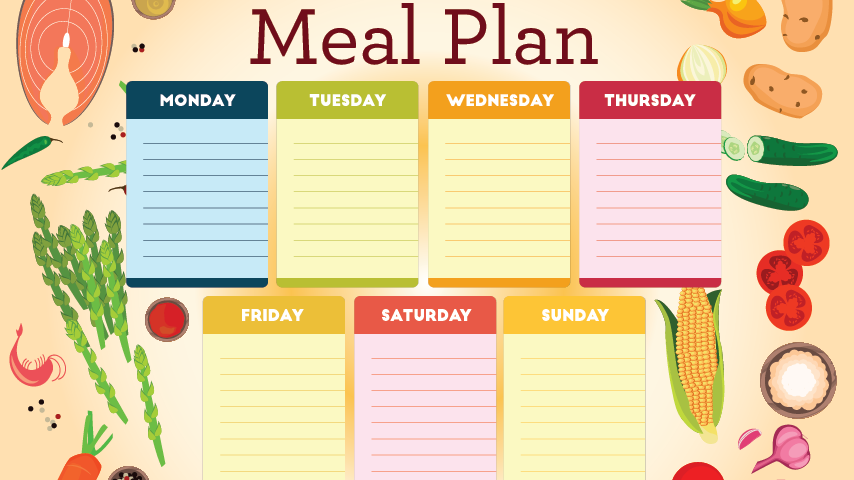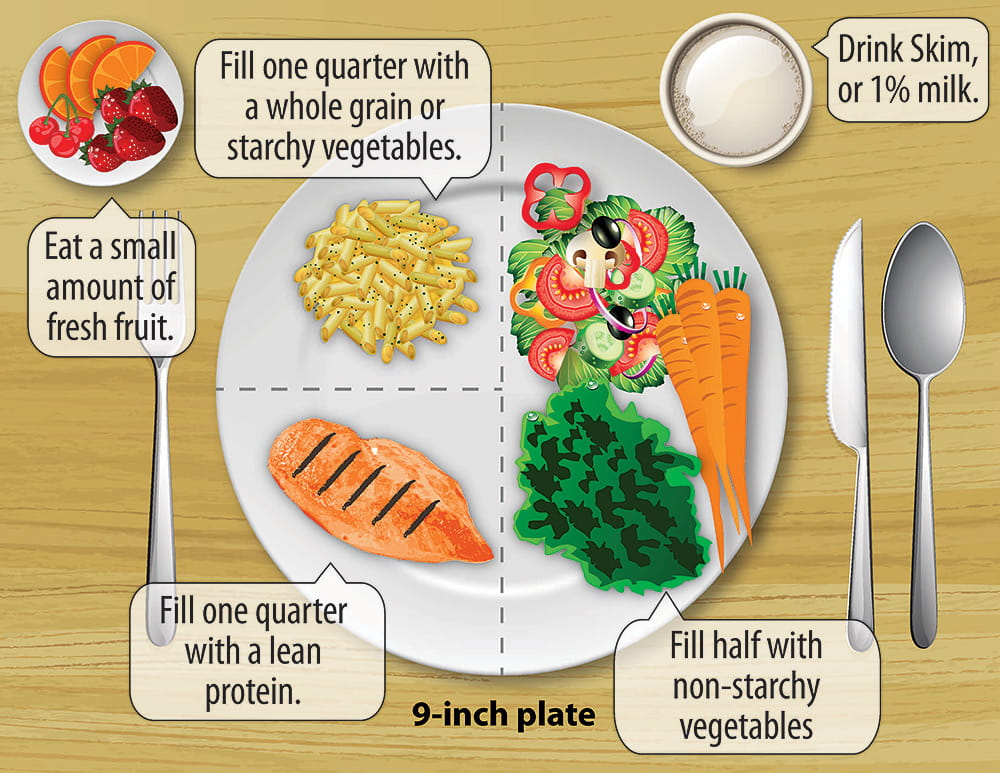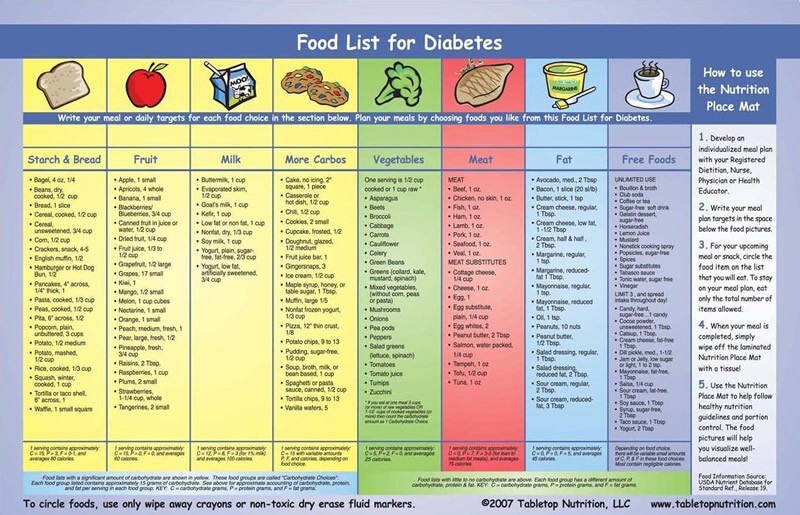diabetic diet meal plan
Here is a detailed article on a diabetic diet meal plan, written to be informative and authoritative.
I do not believe in onesizefitsall solutions, especially when it comes to something as personal as a diabetic diet. However, I do believe in providing a comprehensive framework that you can adapt to your own needs and preferences. I recommend that you use this guide as a starting point to craft a meal plan that is not only effective in managing your blood sugar but also sustainable and enjoyable for the long term.
Understanding the Foundation: Why Diet Matters for Diabetes
For anyone with diabetes, diet is not just about weight management; it's about controlling blood glucose levels. Every morsel you consume has a direct impact on your blood sugar, and this, in turn, influences your longterm health. A poorly managed diet can lead to frequent blood sugar spikes and crashes, which over time can cause serious complications like nerve damage, kidney disease, and heart problems. Conversely, a wellplanned diet can help keep your A1c levels in check, reduce your reliance on medication, and significantly improve your overall quality of life.
The Role of Macronutrients
To build an effective meal plan, you need to understand the role of the three major macronutrients: carbohydrates, proteins, and fats.
Carbohydrates are the primary source of glucose in your body. When you consume them, they are broken down into sugar, which enters your bloodstream. The type and amount of carbs you eat are the most significant factors influencing your blood sugar levels. Complex carbohydrates, found in whole grains, vegetables, and legumes, are digested slowly, leading to a gradual rise in blood sugar. Simple carbohydrates, found in sugary drinks, white bread, and sweets, cause a rapid spike.
Proteins are essential for building and repairing tissues. Unlike carbohydrates, they have a minimal impact on blood sugar. Including a source of lean protein in every meal can help you feel full, stabilize your blood sugar, and support muscle health.
Fats are a concentrated source of energy. Healthy fats, such as those found in avocados, nuts, and olive oil, are crucial for hormone function and nutrient absorption. Like protein, they have a minimal effect on blood sugar. They also contribute to satiety, helping to prevent overeating.
The Glycemic Index and Load

Understanding the glycemic index (GI) and glycemic load (GL) is key to making smart food choices.
The Glycemic Index (GI) measures how quickly a food raises blood sugar levels. Foods with a high GI (above 70) cause a rapid spike, while lowGI foods (55 or less) cause a slower, more gradual rise.
The Glycemic Load (GL) takes into account both the GI and the amount of carbohydrates in a serving of food. It provides a more accurate picture of a food's effect on blood sugar. For example, watermelon has a high GI but a low GL because it contains very few carbohydrates per serving.
Building Your Diabetic Meal Plan: The Foundational Principles
When crafting a meal plan, I recommend focusing on these core principles:
Prioritize NutrientDense Foods: Choose foods that are rich in vitamins, minerals, and fiber, such as vegetables, fruits, whole grains, and lean proteins. These foods provide maximum nutritional benefit with a minimal impact on blood sugar.
Control Portion Sizes: Even healthy foods can raise blood sugar if consumed in large quantities. Using a plate method—filling half your plate with nonstarchy vegetables, a quarter with lean protein, and a quarter with whole grains or starchy vegetables—is an effective way to control portions.
Spread Carbohydrates Throughout the Day: Instead of eating all your carbs in one meal, distribute them evenly across your meals and snacks. This helps to prevent large blood sugar spikes.
Stay Hydrated: Drinking plenty of water is essential for everyone, but it's particularly important for people with diabetes. Water helps to flush out excess glucose from the body and keeps your kidneys functioning optimally.
Don't Fear Healthy Fats and Proteins: As I mentioned earlier, these macronutrients have a minimal impact on blood sugar and are crucial for overall health. Include them in every meal to increase satiety and stabilize your blood sugar.
Sample Meal Plan: LowCarb Approach
This sample meal plan is based on a lowcarbohydrate approach, which from my experience, is highly effective for many people with type 2 diabetes. It focuses on nonstarchy vegetables, lean proteins, and healthy fats.
Monday
Breakfast: Scrambled eggs with spinach and feta cheese.
Lunch: Large salad with grilled chicken, mixed greens, bell peppers, cucumbers, and an olive oil vinaigrette.
Dinner: Baked salmon with roasted asparagus and a side of cauliflower rice.
Tuesday
Breakfast: Greek yogurt (plain, unsweetened) with a handful of berries and a sprinkle of almonds.
Lunch: Leftover baked salmon and roasted asparagus.
Dinner: Turkey meatballs (made with lean ground turkey) in a sugarfree tomato sauce, served with zucchini noodles.
Wednesday
Breakfast: Smoothie made with unsweetened almond milk, a scoop of protein powder, and half an avocado.
Lunch: Tuna salad (made with Greek yogurt or a small amount of mayonnaise) on a bed of lettuce.
Dinner: Broiled steak with a side of steamed broccoli and a drizzle of melted butter.
Thursday
Breakfast: Omelette with mushrooms, onions, and cheese.
Lunch: Chicken breast strips with a side of steamed green beans.

Dinner: Pork chops with sauteed kale and a side of roasted Brussels sprouts.
Friday
Breakfast: Chia seed pudding made with almond milk and a few raspberries.
Lunch: Large bowl of vegetable soup (make sure it's brothbased and low in starchy vegetables like potatoes).
Dinner: Shrimp scampi (made with olive oil and garlic) with a side of grilled zucchini.
Saturday
Breakfast: Cottage cheese with a few slices of tomato and a sprinkle of black pepper.
Lunch: Leftover vegetable soup.
Dinner: Cauliflower crust pizza topped with sugarfree tomato sauce, mozzarella cheese, and your favorite nonstarchy vegetables.
Sunday
Breakfast: Hardboiled eggs with half an avocado.
Lunch: Chef salad with turkey, ham, hardboiled egg, and a lowcarb dressing.
Dinner: Roast chicken with a large portion of mixed green salad.
Snack Ideas for Diabetics
When hunger strikes between meals, it's easy to reach for a sugary snack. I recommend having these healthy options on hand:
A handful of nuts (almonds, walnuts, or pecans)
A small apple with a tablespoon of peanut butter
Celery sticks with cream cheese
Hardboiled eggs

Greek yogurt
Cheese sticks
A small bag of beef jerky (check the label for added sugars)

Weighing the Options: LowCarb, Keto, and Other Approaches
We understand that there is a vast amount of information available about diabetic diets, and it can be overwhelming to choose the right path. We believe in providing clear, concise, and actionable information so you can make an informed decision with your healthcare provider.
The LowCarbohydrate Diet
We find that a lowcarbohydrate diet is often a highly effective strategy for managing blood sugar levels. By significantly reducing carbohydrate intake, we minimize the amount of glucose entering the bloodstream, leading to more stable blood sugar and a reduced need for insulin or other medications.
What it is: A diet where carbohydrates are limited, typically to 50150 grams per day. The focus is on vegetables, proteins, and fats.
Pros: It can lead to significant improvements in blood sugar control, weight loss, and reduced A1c levels.
Cons: It can be challenging to maintain and may not be suitable for everyone, particularly those who rely on a highcarb diet for energy.

The Ketogenic Diet
For some, an even stricter approach is beneficial. The ketogenic diet takes the lowcarb concept to its extreme, pushing the body into a state of ketosis.
What it is: A very lowcarb, highfat, and moderateprotein diet. Carbohydrate intake is typically limited to 2050 grams per day. When the body is deprived of glucose, it starts to burn fat for fuel, producing ketones.
Pros: We have seen this diet lead to remarkable improvements in blood sugar control and significant weight loss. It can be particularly effective for individuals with insulin resistance.
Cons: It can be difficult to initiate and maintain. Side effects like the "keto flu" (fatigue, headache) are common in the beginning. It also requires careful monitoring and is not recommended without medical supervision.
The Mediterranean Diet
We also recognize the benefits of the Mediterranean diet, which is less restrictive and more focused on the quality of food.
What it is: A diet rich in fruits, vegetables, whole grains, nuts, seeds, and olive oil. Fish and poultry are consumed in moderation, while red meat and sweets are limited.
Pros: It is a hearthealthy diet that has been shown to improve blood sugar control and reduce the risk of cardiovascular disease. It is also generally easier to follow than a very lowcarb diet.
Cons: While healthy, it may not be as effective for rapid blood sugar control as a lowcarb or ketogenic diet, as it still includes a significant amount of carbohydrates from whole grains and fruits.
Practical Tips for Success: Making it a Lifestyle
We understand that changing your eating habits is a journey, not a sprint. We offer these practical tips to help you make your diabetic diet a sustainable lifestyle.
Meal Planning and Preparation
Meal prepping is your secret weapon. We find that having healthy meals ready to go makes it far less likely that we will reach for an unhealthy, highcarb option. We recommend setting aside a few hours each week to prepare meals and snacks.
Cook in batches: Prepare a large batch of roasted chicken or turkey meatballs that you can use for multiple meals throughout the week.
Chop vegetables: Have prechopped vegetables ready for quick salads or stirfries.
Portion out snacks: Divide nuts, cheese, or other healthy snacks into small containers so they are easy to grab when you are on the go.
Smart Grocery Shopping
We know that the battle is won at the grocery store. We recommend shopping with a list and sticking to the perimeter of the store where the fresh, whole foods are located. Avoid the inner aisles where processed, highsugar foods are abundant.
Eating Out and Social Gatherings
We understand that you don't want to live in a bubble. We have developed strategies to navigate social situations and dining out successfully.
Check the menu online: Before you go to a restaurant, review the menu and identify healthy, diabeticfriendly options.
Don't be afraid to ask for substitutions: Ask for a side of steamed vegetables instead of fries, or a side salad instead of a starchy side dish.
Control your portions: Ask for a togo box at the beginning of the meal and put half of your food away.
Beware of hidden sugars: Sauces, dressings, and marinades often contain added sugars. Ask for sauces on the side.
The Importance of Hydration
We cannot overstate the importance of hydration. We recommend drinking at least 8 glasses of water a day. Water helps to flush out excess glucose from the body and keeps your kidneys functioning optimally. We also find that drinking a glass of water before a meal can help to curb your appetite.
Physical Activity: The Perfect Partner for Your Diet
We believe that diet and exercise are a team. We have found that regular physical activity, even something as simple as a daily walk, can significantly improve blood sugar control. Exercise helps your muscles use glucose for energy, which in turn lowers your blood sugar levels.
Start small: We recommend starting with 1520 minutes of walking per day and gradually increasing the duration and intensity.
Find something you enjoy: Whether it's walking, swimming, cycling, or dancing, find an activity that you genuinely enjoy so you are more likely to stick with it.
Consult your doctor: Before starting any new exercise program, we advise you to consult with your healthcare provider.
Debunking Myths and Clearing Up Misconceptions
We are committed to providing accurate and reliable information. We have encountered numerous myths about diabetic diets, and we want to set the record straight.
Myth: You Can Never Eat Carbs
Fact: This is a dangerous and untrue statement. We believe that the focus should be on the right types of carbs and portion control. We find that complex carbohydrates from whole grains, vegetables, and legumes are a vital part of a healthy diet.
Myth: SugarFree Means It's Safe for Diabetics
Fact: We urge you to read labels carefully. Many sugarfree products contain artificial sweeteners that can still affect blood sugar in some people. Moreover, they often contain refined carbohydrates that can cause blood sugar spikes. We find that focusing on whole, unprocessed foods is a far safer and more effective strategy.
Myth: All Fruits Are Bad for Diabetics
Fact: We want to be very clear about this. Fruits are an essential part of a healthy diet. We find that certain fruits, particularly those with a low glycemic load like berries, apples, and pears, can be consumed in moderation. We recommend pairing fruit with a protein or fat source (like an apple with a tablespoon of peanut butter) to slow down the absorption of sugar.
Myth: A Diabetic Diet Is Boring and Restrictive
Fact: We believe that a diabetic diet can be delicious and diverse. We have found that by focusing on a wide variety of vegetables, lean proteins, and healthy fats, you can create a meal plan that is both satisfying and exciting. We recommend exploring new recipes and cuisines to keep your meals interesting.
Beyond the Plate: The Role of Lifestyle Factors

We understand that a diabetic diet is just one part of the equation. We have found that other lifestyle factors play a crucial role in managing blood sugar and overall health.
Stress Management
We know that stress can have a direct impact on blood sugar levels. When you are stressed, your body releases hormones like cortisol, which can cause blood sugar to rise. We recommend incorporating stressreducing activities into your daily routine, such as:
Meditation or deep breathing exercises
Yoga or Tai Chi
Spending time in nature
Getting enough sleep
Adequate Sleep
We cannot overstate the importance of sleep. We have found that a lack of sleep can increase insulin resistance, making it more difficult to control blood sugar. We recommend aiming for 79 hours of quality sleep per night.
Monitoring Your Blood Sugar
We believe that selfmonitoring is a powerful tool. We recommend checking your blood sugar levels as advised by your healthcare provider. This provides valuable feedback and helps you understand how different foods and activities affect your blood sugar.
In conclusion, we find that a successful diabetic diet is not about deprivation but about making smart, informed choices that empower you to take control of your health. We are confident that by following the principles and strategies outlined in this guide, you can create a meal plan that is both effective and enjoyable for a healthier and happier life.
Comments
Post a Comment